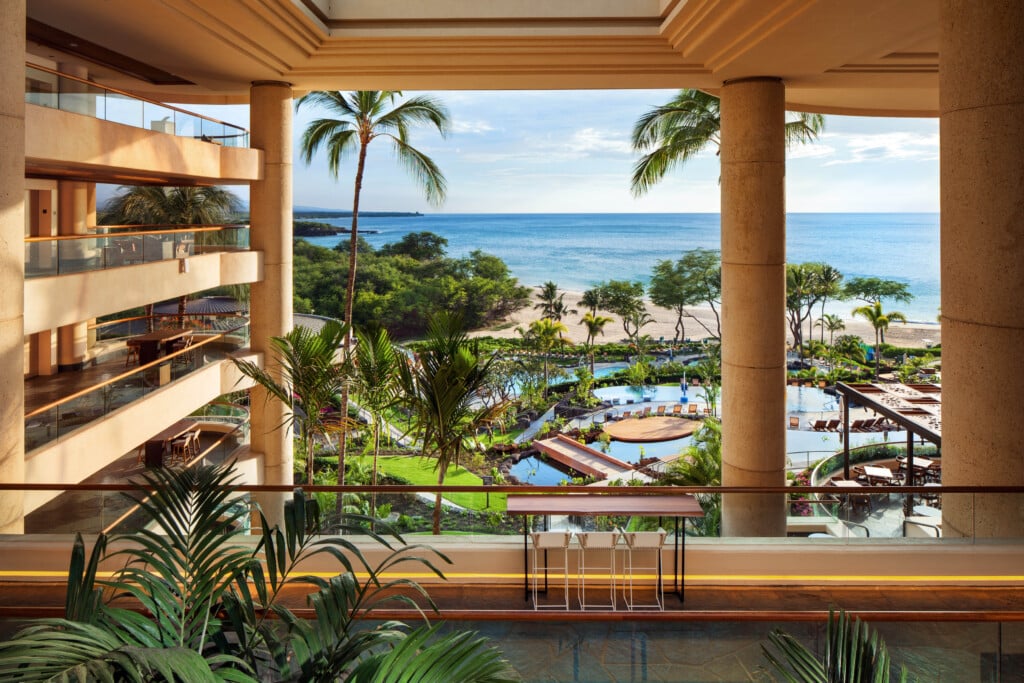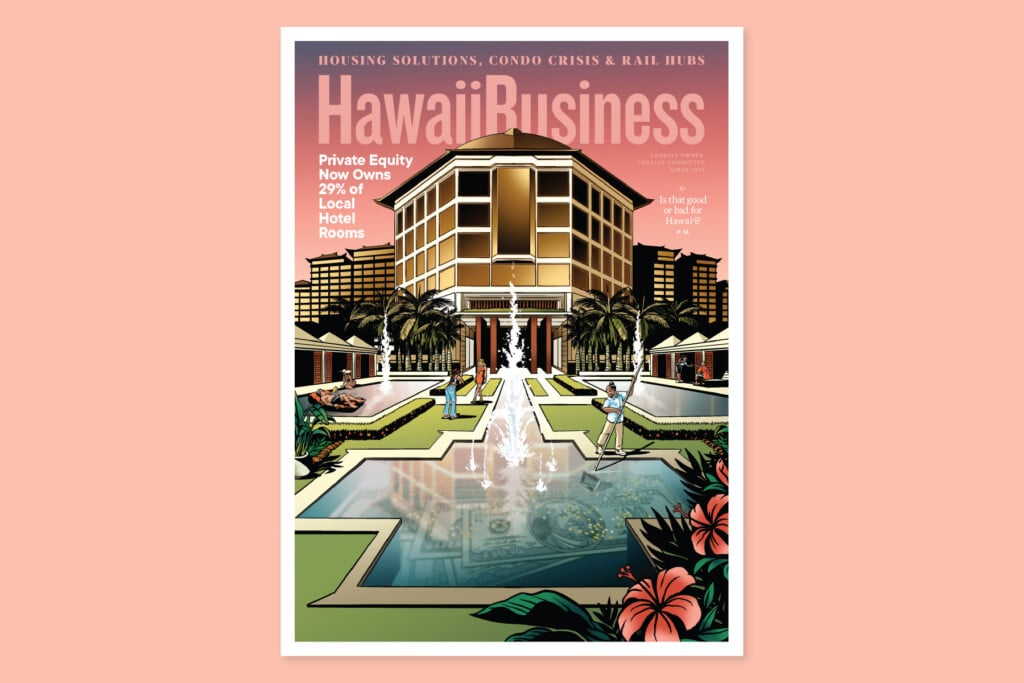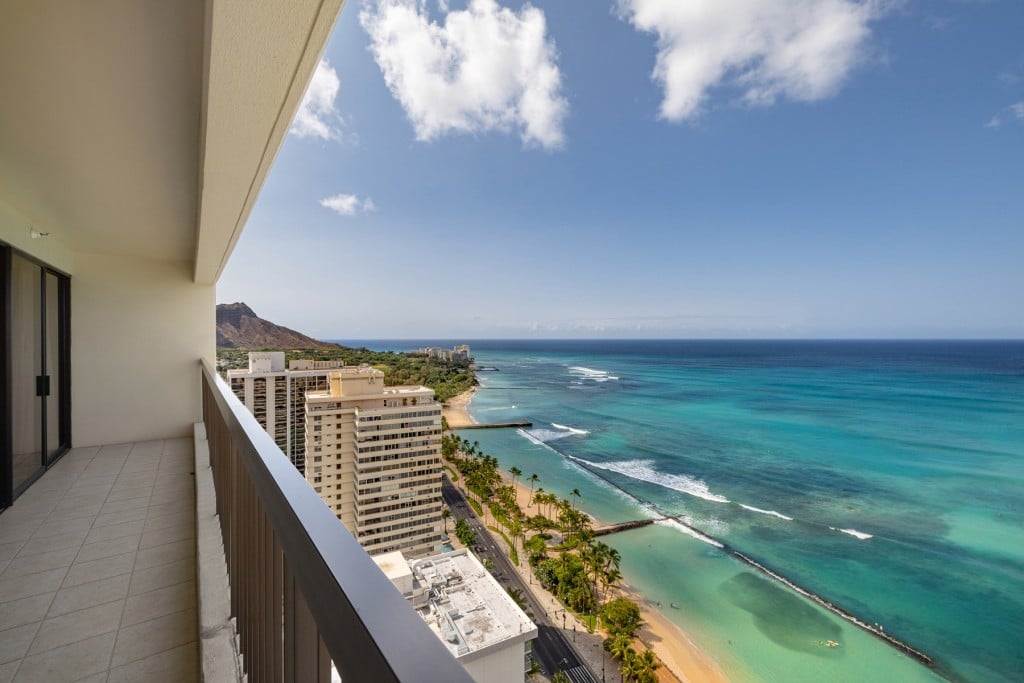Policing Hawaii’s Illegal Vacation Rentals
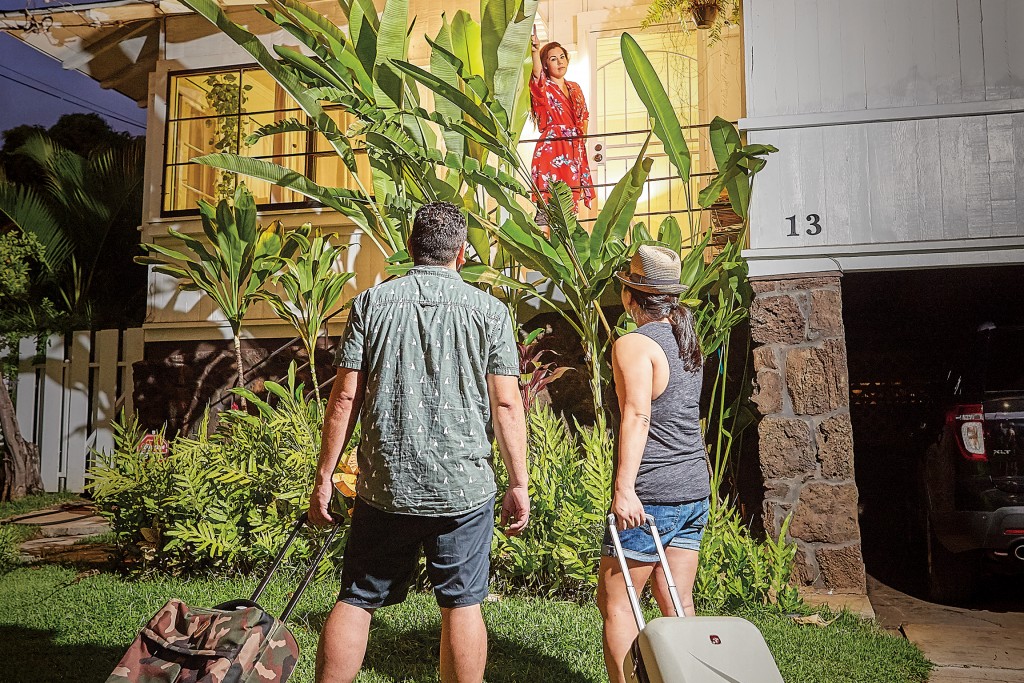
Honolulu’s weak law makes it hard to crack down on illegal vacation rentals, but a new law is in the works. Other jurisdictions – in Hawaii and on the Mainland – have tougher laws and more success with enforcement.
Kailua is often described as an idyllic beach town, but at night it’s not always so charming. Sometimes, tourists staying in illegal vacation rentals throw loud parties. Or they’ll arrive in the middle of the night and knock on neighboring doors trying to locate their rental.
Realtor Cynthia Rubinstein recalls Kailua in the late 1980s: Back then, she says, vacation rentals usually housed friends and family visiting local residents.

Kathy Sokugawa, acting Director of Honolulu’s Department of Planning and Permitting | Photo: David Croxford
That’s no longer true. Vacation rentals have proliferated across the town – and state – as tourists seek accommodations that give them more authentically local experiences than hotels and often for less money. The Hawaii Appleseed Center for Law and Economic Justice estimates there are 23,000 vacation rentals in Hawaii, and many are illegal.
Kauai and Maui counties have been more effective at eliminating illegal vacation rentals than Honolulu, where the city’s Department of Planning and Permitting estimates 8,000 to 10,000 vacation rentals operate on Oahu at any given time. The biggest challenge that Honolulu faces, according to DPP acting Director Kathy Sokugawa, is that an online listing is not enough to prove that an illegal vacation rental operation is occurring under the county’s existing laws.
“People think, ‘I can go on the Internet and find hundreds of these. Why can’t you control them?’ Because that’s just intent,” she says, not the actual act of doing something illegal.
Several people interviewed for this story say Honolulu needs to tighten its laws or vacation rentals will continue to proliferate unchecked, further reducing the supply of long-term housing for local people and turning residential neighborhoods into resort districts.
Enforcing the Law
Honolulu has two types of vacation rentals: transient vacation units where absentee owners rent out entire homes, condos or apartment units, and bed-and-breakfasts where owners or operators live on-site and rent out spare rooms or cottages. Both types are rented to transient guests for less than 30 days at a time.

The law limits vacation rentals to resort areas like Waikiki, Sokugawa says. Outside of these areas, legal vacation rentals must meet certain criteria and receive special permission in the form of nonconforming-use certificates. The city stopped issuing these certificates in 1989-90, and today only 816 vacation rentals on Oahu have them. Any vacation rental located outside of resort areas without a nonconforming-use certificate is operating illegally.
Investigations of illegal vacation rentals in Honolulu are driven by complaints, says Wallace Carvalho, chief of the planning department’s customer service division. He has 19 inspectors, and from January to September of this year, they received 104 complaints, paid 2,042 visits to properties and issued 23 notices of violations. He adds that vacation rentals are not his inspectors’ primary focus; they also handle other zoning-related enforcement. For his inspectors, suspected illegal vacation rentals make up about 15 to 20 percent of all requests for investigation.
Enforcement is difficult, he says: “What happens is when we get a complaint, it doesn’t necessarily mean we go one time and we’re going to catch somebody. An inspector may go to that property 10, 12 times in the hopes of finding someone there and getting information and interviewing the people who are there.”
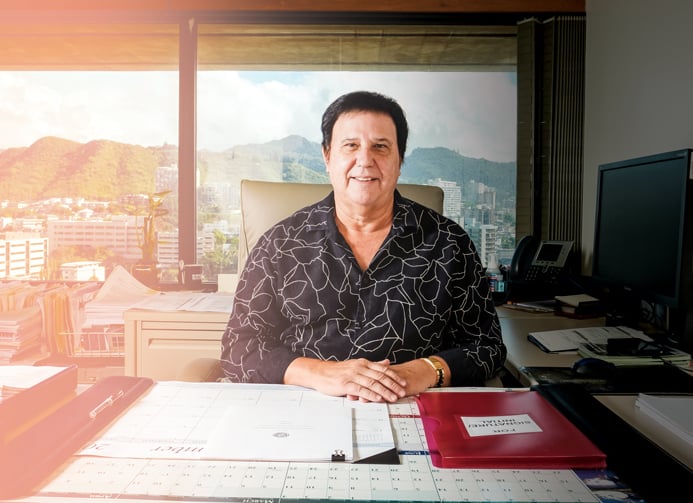
Wallace Carvalho, chief of the planning department’s customer service division | Photo: Aaron Yoshino
Because an advertisement is not enough to prove an operation is illegal, inspectors must observe and document activity on the property and gather information like the names and telephone numbers of occupants, how long they’re staying there, and obtain a signed lease agreement that reflects compensation. Once that’s in hand, notices of violation are issued, and operators have 30 days to make corrections. If none are made, civil fines are issued. Sokugawa says the largest amount the department has collected was $50,000.
A mix of people are found to be operating illegal vacation rentals, Carvalho says. “We’re finding that owners are renting out second homes, third homes. We’re finding that houses, single-family dwellings that are owned by corporations, are also doing illegal transient vacation rentals. It’s basically islandwide.”
Challenging Problem
Bill Hicks has lived in Kailua for 24 of the last 32 years and serves as chairman of the Kailua Neighborhood Board. He says most community members are concerned about the influx of vacation rentals and their impacts on the town’s infrastructure, traffic and long-term housing market. He believes the county needs to enforce effectively because there’s no confidence that laws are currently followed.
Rubinstein, the Realtor who manages two vacation rentals in Kailua and one in Volcano on Hawai‘i Island, agrees: “So far the city, in my opinion, has not been smart about how to carry out the enforcement. The inspectors’ hands are tied. They show up at houses and people say, ‘Oh we’re friends of the owners,’ because they’ve been coached, or they’re told, ‘You can’t enter this property, you’re trespassing.’ ”
She says her two Kailua vacation rentals require 30-night minimum stays because she wants to keep the residential community residential. Illegal vacation rentals, she says, have been nuisances to neighbors. “It’s not being controlled,” she says. “And that’s really the major problem.”
Rubinstein was also part of a Honolulu county task force that met this year to discuss changes to the county’s laws to better regulate vacation rentals. The planning department proposed the changes and was waiting on the City Council to introduce its proposals.
Major changes would include: establishing a registration process; creating new property tax categories for vacation rentals instead of taxing them as residential; imposing fines such as $25,000 for a first recurring violation, plus $25,000 for each day the violation continues, and higher fines for subsequent violations; and setting a limit on the number of vacation rentals. Except in resort zones, resort mixed use and apartment precincts and those allowed in the apartment medium density zoning district, transient vacation units and bed-and-breakfasts can together take up no more than one percent of dwelling units in each development plan area.
The department also wants to make it illegal to advertise a vacation rental without a registration number. Sokugawa says that would tremendously reduce the time inspectors spend on each complaint.
Brynn Rovito, VP of the Oahu Alternative Lodging Association, a nonprofit organization with 1,200 individual members who support the vacation rental industry, says that with so many vacation rentals but no system in place to become legally compliant, neighbors are pitted against one another – those who support vacation rentals vs. those who don’t.
Her organization, along with Airbnb and VRBO, two popular online hosting platforms, say they support the creation of regulations that protect neighborhood integrity while allowing transient vacation units.
“I really think that if Hawaii as a whole is not going to diversify its visitor base, it’s going to lose out on a segment of this population that’s looking for alternative accommodation. So we definitely need to have something available, because these people, they can easily go somewhere else,” Rovito says, adding that her organization believes transient vacation units should be allowed in residential neighborhoods. She says many of the organization’s members will lose their homes if they don’t have a way to make ends meet by renting to tourists.
Martine Aceves-Foster runs a bed-and-breakfast in Kailua for extra, reliable income. She says she only rents one spare bedroom and says it’s occupied 40 to 45 percent of the year. She wants a system that would enable her to become legally compliant. “People do this because they need to pay their expenses,” she says. “We’re not doing this to get rich quick. It’s just we want to get by, that’s all there is to it.”
Matt Middlebrook, the head of public policy at Airbnb, says his company is “not opposed to putting guardrails around us. We are comfortable with the notion that the appropriate number of vacation rentals on Oahu is not infinite, but the right number of vacation rentals on Oahu is also probably not zero. So how do we get to the right number?”
Not all vacation rental owners are paying the required taxes. State law requires that vacation rental owners – legal or illegal – pay the general excise tax, transient accommodations tax (the so-called hotel room tax) and income taxes, writes Linda Chu Takayama, director of the state Department of Taxation, in an email. Currently, her department is requesting court authorization to serve Airbnb with an administrative subpoena to investigate whether its hosts are paying their state taxes – and the department intends to pursue other rental platforms as well. The state wants the names of hosts, plus their addresses, taxpayer identification numbers and Social Security numbers, among other things.
A December 2016 report prepared for the Hawaii Tourism Authority says vacation rentals could bring in an estimated $135.7 million annually in transient accommodations taxes in 2018 – and that number could grow to $173.4 million by 2021. Chu Takayama says, in general, the department supports the collection of taxes from the hosting platform, as it is more efficient and reliable than collecting taxes from each individual taxpayer. Previous efforts in the state Legislature and a memorandum of agreement proposed by Airbnb to allow that tax collection failed. In 2016, Gov. David Ige vetoed House Bill 1850, citing concerns that the use of hosting platforms as tax collection agents would provide a shield for owners who do not comply with county laws that restrict vacation rentals.

Another reason some locals hate illegal rentals: Tourists, sometimes on time change, hold loud parties or just act noisily at all hours of the night. | Photo: David Croxford
Different Solutions
Other jurisdictions have been more effective than Hawaii in dealing with vacation rentals, says Madison DeLuca, a policy analyst at the Hawaii Appleseed Center.
One approach makes the advertising platforms responsible for removing illegal vacation rental listings and requires that platforms provide jurisdictions with such data as addresses of listed properties and permit and tax numbers – practices that give local enforcement teeth.
Platform liability is used in San Francisco, where only permanent residents can host vacation rentals, and they’re required to register with the city. Hosting platforms are fined if they do not remove listings that are unregistered – and therefore illegal. Peter Byrne, senior analyst in San Francisco’s Office of Short-Term Rentals, says the platforms have been cooperative and the city now has fewer than 4,000 short-term rental listings on major platforms, compared to 12,00 to 15,000 before platform liability was required.
Isaiah Feldman-Schwartz, a legal analyst with the Hawaii Appleseed Center, says platform liability disincentivizes people from illegal operations because they can’t get bookings without advertising. And it means that one person can monitor illegal activity from a computer instead of sending several people around the island to knock on doors and see if people are home, he adds.
Enforcement in Other Hawaii Counties
All Hawaii counties automatically allow vacation rentals in certain areas – typically those zoned for resort use – though the exact rules differ in each county. Other vacation rentals that meet certain criteria can receive special permission – in the form of nonconforming-use certificates or permits – to
operate outside of those areas.
In Maui County, 353 vacation rentals had permission to operate outside of permitted areas and on Kauai, about 435 had permission. Kauai no longer allows new vacation rentals outside of permitted areas.
In Hawaii County, about 145 bed-and-breakfasts – the only type of vacation rental the county regulates – had permits to operate in certain parts of urban, rural and agricultural districts. Bed-and-breakfasts are automatically allowed in vacation and commercial districts and most residential districts. The county is currently drafting its first transient vacation rental regulations, but currently no limit exists on the number of transient vacation rentals (those where the owner is not living on the property).
Leaders of the Maui, Kauai and Hawaii county planning departments do not know how many vacation rentals are operating illegally in their counties. However, John Rapacz, administrator of Maui County’s zoning administration and enforcement division, says enforcement is easier in Maui County because of a law that allows his team to presume that vacation rentals are operating illegally if inspectors find or hear about an advertisement that does not include a permit number. It’s then up to the owner or operator to prove the use is legal.
 “I really think that if Hawaii as a whole is not going to diversify its visitor base, it’s going to lose out on a segment of this population that’s looking for alternative accommodation.” – Brynn Rovito VP, Oahu Alternative Lodging Association
“I really think that if Hawaii as a whole is not going to diversify its visitor base, it’s going to lose out on a segment of this population that’s looking for alternative accommodation.” – Brynn Rovito VP, Oahu Alternative Lodging Association
“That’s made a huge difference for us in terms of our ability to enforce,” he says. However, if the department receives a complaint without an advertisement, inspectors have to do a more traditional investigation and gather proof that an illegal operation is occurring. Maui County has eight zoning inspectors, including two new temporary inspectors who were brought on specifically to help enforce vacation rental laws. A new temporary enforcement clerk was also hired to help input information and send out warning notices to illegal vacation rentals.
Kauai County has a similar advertisement requirement, but Kaaina Hull, the deputy planning director, says this doesn’t mean that finding illegal vacation rentals is quick or easy. Three of his five inspectors are dedicated solely to vacation rental enforcement, and they actively search the Internet for illegal operations. The challenge is that inspectors must match the illegal listings they find to the actual properties – something that’s made difficult when hosting platforms don’t disclose the addresses of its rentals until bookings are made. “It makes it hard and in many cases near impossible for our enforcement agents to actually identify whether or not this is an illegal operation,” Hull says.
Kauai County generally conducts about 150 to 250 investigations a year – some initiated from complaints the department receives. Hull says his team received 22 complaints regarding illegal vacation rentals in 2017, plus some anonymous complaints. Some residents who have complaints, he says, fear retaliation and don’t want to be subpoenaed for contested cases. At press time, there were 36 cases before the county’s Planning Commission in which property owners were accused of violations but are challenging that assessment.
Hull says many Kauai residents are upset about the many vacation rentals with nonconforming-use certificates in the Hanalei, Lumahai and Wainiha areas – which are disaster-prone areas with limited evacuation routes – so the county has repeatedly asked the state Legislature for permission to phase out those certificates. A ban on vacation rentals has been in effect since May, he says, so when Hurricane Lane came, the county didn’t have to evacuate any transients from those areas. That wasn’t the case in April, when about 400 transients were evacuated because of flooding.
In Hawaii County, Michael Yee says he doesn’t recall receiving complaints of illegal bed-and-breakfast establishments in the nearly two years he’s served as the planning director. He says county rules on such things as signage and parking prevent bed-and-breakfasts from being nuisances to neighbors. However, if there were a complaint about an illegal operation, inspectors would visit the property and, if possible, help the operators and owners get permitted so they can operate legally.
He adds that Hawaii County is working on an ordinance to regulate short-term vacation rentals in which the owners are absent. Currently, no such ordinance exists.
On Maui, the greatest concern is the illegal short-term rental of single-family homes. The county is stepping up enforcement by partnering with LodgingRevs, a vendor that Rapacz says will help the county identify illegal rentals using a web-based approach. However, he says there will always be a problem with vacation rentals no matter how successful the county’s enforcement program is. After all, many single-family homes can be rented out for hundreds or even thousands of dollars a day as vacation rentals.
“I think that temptation will always be there, and we will always have to be on the lookout for this,” he says.
Legal Rentals
Vacation rentals are generally allowed in these areas without government restriction:
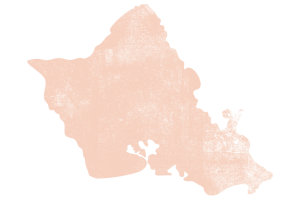 Oahu: Resort areas, such as Waikiki. Vacation rentals are also allowed in the apartment medium density district if they are located within 3,500 feet of a resort district and if the apartment and resort districts have been rezoned as part of a master-planned resort community. Honolulu’s Department of Planning and Permitting does not have an estimate of the number of vacation rentals operating in these areas. Acting Director Kathy Sokugawa says that’s because units in these areas are dynamic – they can change from hotel to condo to time share to short-term rental.
Oahu: Resort areas, such as Waikiki. Vacation rentals are also allowed in the apartment medium density district if they are located within 3,500 feet of a resort district and if the apartment and resort districts have been rezoned as part of a master-planned resort community. Honolulu’s Department of Planning and Permitting does not have an estimate of the number of vacation rentals operating in these areas. Acting Director Kathy Sokugawa says that’s because units in these areas are dynamic – they can change from hotel to condo to time share to short-term rental.
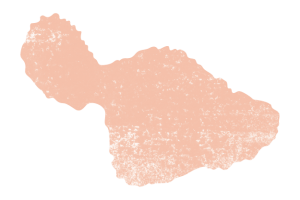 Maui County: Areas zoned for hotel use. Some may be located in apartment districts if they meet certain pre-existing criteria. An estimated 9,000 vacation rentals are operating in these areas.
Maui County: Areas zoned for hotel use. Some may be located in apartment districts if they meet certain pre-existing criteria. An estimated 9,000 vacation rentals are operating in these areas.
 Kauai: Visitor destination areas in Waimea, Princeville, Kapaa, Lihue, Wailua and Poipu. Roughly 3,000 to 4,000 vacation rentals operate in these areas.
Kauai: Visitor destination areas in Waimea, Princeville, Kapaa, Lihue, Wailua and Poipu. Roughly 3,000 to 4,000 vacation rentals operate in these areas.
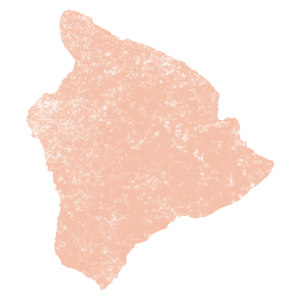 Hawaii County: In residential-commercial mixed-use, double-family residential, and multifamily residential districts; resort-hotel districts; neighborhood commercial, general commercial and village commercial districts; and the Downtown Hilo commercial district. It’s unknown how many bed-and-breakfasts are operating in these areas.
Hawaii County: In residential-commercial mixed-use, double-family residential, and multifamily residential districts; resort-hotel districts; neighborhood commercial, general commercial and village commercial districts; and the Downtown Hilo commercial district. It’s unknown how many bed-and-breakfasts are operating in these areas.
